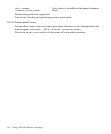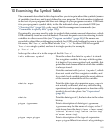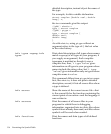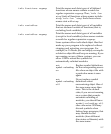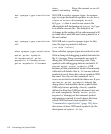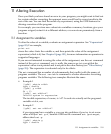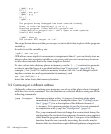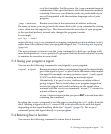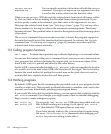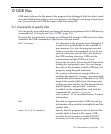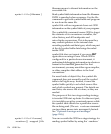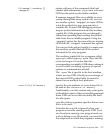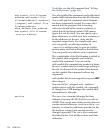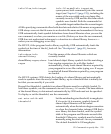return, return
expression
You can cancel execution of a function call with the return
command. If you give an expression argument, its value
is used as the return value from the function value.
When you use return, GDB discards the selected stack frame (and all frames within
it). You can think of this as making the discarded frame return prematurely. If you
wish to specify a value to be returned, give that value as the argument to return.
This pops the selected stack frame (see “Selecting a frame” (page 73)), and any other
frames inside of it, leaving its caller as the innermost remaining frame. That frame
becomes selected. The specified value is stored in the registers used for returning values
of functions.
The return command does not resume execution; it leaves the program stopped in
the state that would exist if the function had just returned. In contrast, the finish
command (see “Continuing and stepping” (page 64)) resumes execution until the
selected stack frame returns naturally.
11.5 Calling program functions
call expr Evaluate the expression expr without displaying void returned values.
You can use this variant of the print command if you want to execute a function from
your program, but without cluttering the output with void returned values. If the
result is not void, it is printed and saved in the value history.
For the A29K, a user-controlled variable call_scratch_address specifies the location
of a scratch area to be used when GDB calls a function in the target. This is necessary
because the usual method of putting the scratch area on the stack does not work in
systems that have separate instruction and data spaces.
11.6 Patching programs
By default, GDB opens the file containing the executable code of your program (or the
corefile) as read-only. This prevents accidental alteration to machine code; and it also
prevents you from intentionally patching your program binary.
If you would like to be able to patch the binary, you can specify that explicitly with the
set write command. For example, you might want to turn on internal debugging
flags, or even to make emergency repairs.
set write on,
set write off
If you specify 'set write on', GDB opens executable and core
files for both reading and writing; if you specify 'set write
off' (the default), GDB opens them as read-only.
If you have already loaded a file, you must load it again (using
the exec-file or core-file command) after changing set
write, for your new setting to take effect.
122 Altering Execution



